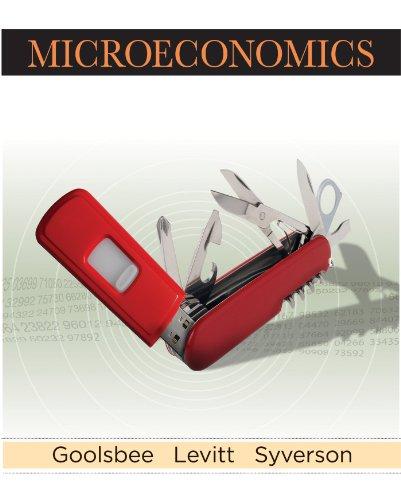11. A local golf courses hired-gun econometrician has determined that there are two types of golfers, frequent...
Question:
11. A local golf course’s hired-gun econometrician has determined that there are two types of golfers, frequent and infrequent. Frequent golfers’
annual demand for rounds of golf is given by Q
f = 24 – 0.3P, where P is the price of a round of golf. In contrast, infrequent golfers’ annual demand for rounds of golf is given by Q i =
10 – 0.1P. The marginal and average total cost of providing a round of golf is $20.
a. If the golf course could tell a frequent golfer from an infrequent golfer, what price would it charge each type? How many times would each type golf? How much profit would the golf course generate?
The greens manager has difficulty telling frequent from infrequent golfers, so she decides to use second-degree price discrimination (quantity discounts) to make different types of golfers selfselect into the most profitable pricing scheme.
The course sets a price for individual rounds of golf, but also offers a quantity discount for members willing to buy a rather large quantity of rounds in advance. The course’s owners hope that frequent golfers will self-select into the discounted plan, and that infrequent golfers will choose to buy individual rounds.
b. What price should the golf course set for individual rounds of golf? Why?
c. If the course wishes to maximize profit, what price and minimum quantity should it establish for the discounted plan?
d. Which plan will generate the greatest consumer surplus for frequent golfers, the individual-round plan or the discount plan?
Illustrate your answer by showing and measuring the areas of surplus on frequent golfers’
inverse demand curves.
e. Which plan will generate the greatest consumer surplus for infrequent golfers, the individualround plan or the discount plan? Illustrate your answer by showing the areas of surplus on infrequent golfers’ inverse demand curves.
f. Based on your answers to
(d) and (e), will the plan be successful in making golfers self-select into the most profitable plan for the golf course?
g. Suppose that each type of golfer came to the course with the word “frequent” or “infrequent”
tattooed on his or her forehead. Is this information of any value to the golf course owner? (In other words, can the owner earn any more profits by segmenting than it did with its quantity discount plan?)
Step by Step Answer:

Microeconomics
ISBN: 9780716759751
1st Edition
Authors: Austan Goolsbee, Steven Levitt, Chad Syverson






